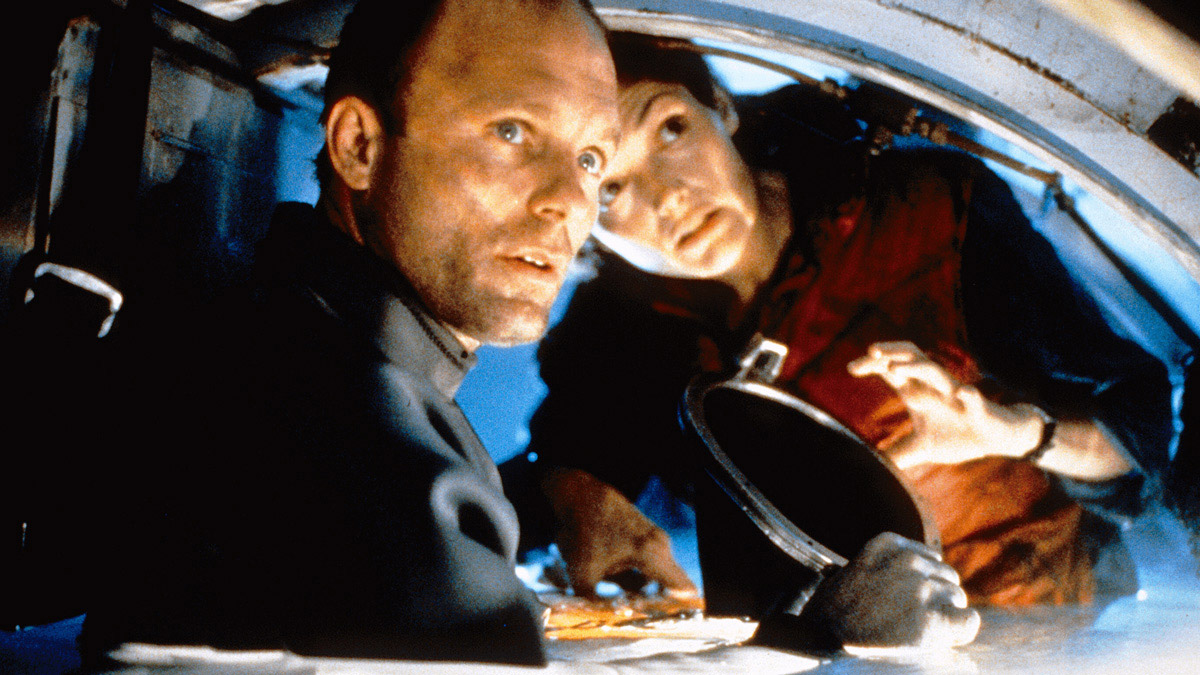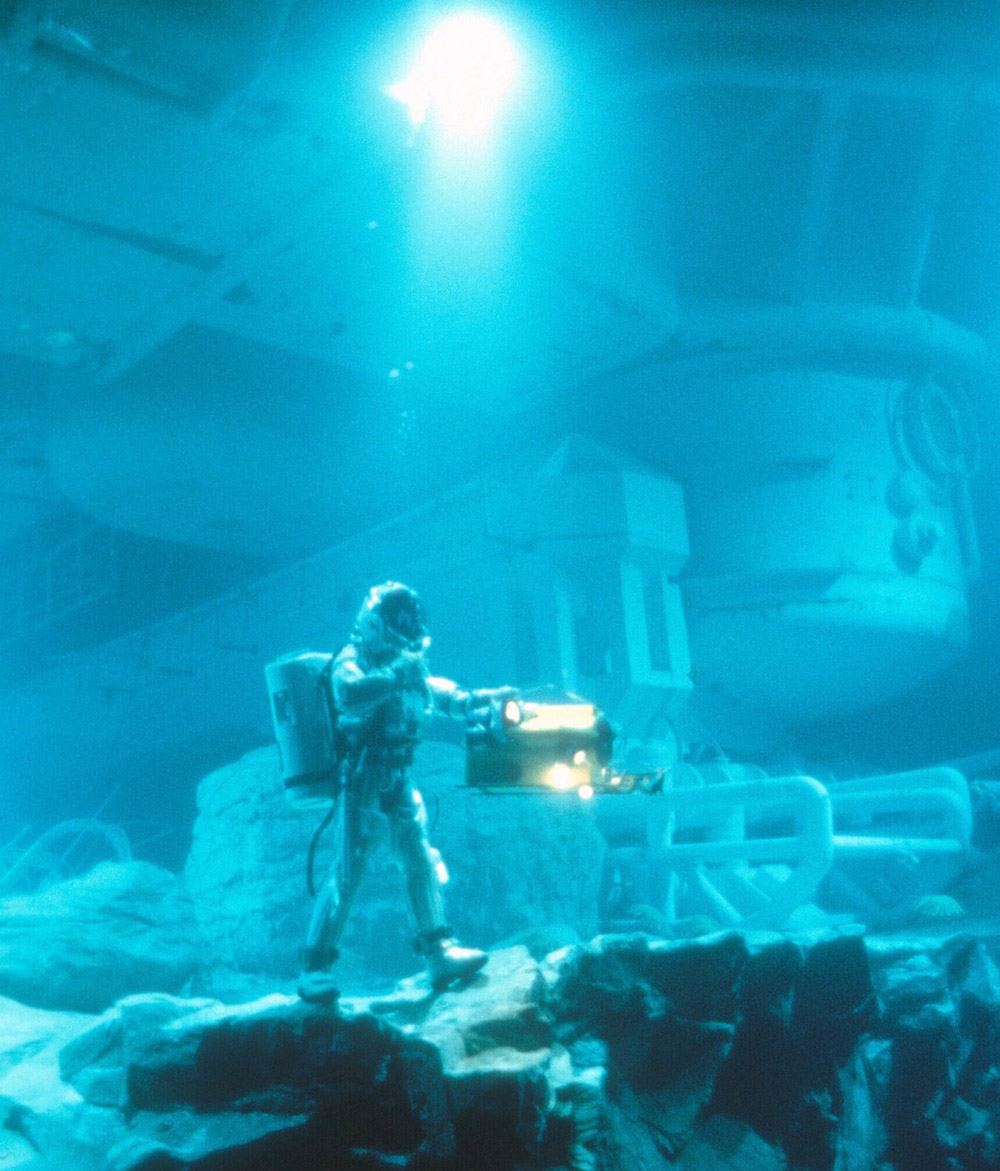
(c) Photofest / Getty Images
A meaningful “box office failure”. What did Cameron see in The Abyss?
2019.04.15
The first full-scale underwater shoot for a marine action movie
Cameron, who loves Cousteau's marine documentaries and has been involved in scuba diving since his teens, wanted to create realistic underwater scenes that were not found in traditional marine action films when filming The Abyss. Until then, underwater scenes had been shot in a studio using a method called ``dry-for-wet.'' This method combined Smoke and slow-motion filming to create an underwater-looking environment in a "dry" studio.
In order to capture the most realistic underwater scenes ever seen, Cameron decided to actually film many of the scenes underwater - ``wet for wet'' so to speak. Al Giddings, who shot the wonderful underwater scenes in ` `The Deep '' (1977), was appointed as the underwater cinematographer. Giddings has a unique background as a former swimmer and underwater gun fisherman, and has since shot many nature documentaries as an underwater cameraman using his own equipment, making him the perfect choice for his combination of technical and athletic ability. It was a person.
The story takes place at the underwater oil drilling base ``Deep Core,'' which was conceived as a life-sized set built inside a huge water tank. After searching all over the world, it was difficult to find a suitable tank, but one possible candidate was the discontinued Cherokee Nuclear Power Plant in South Carolina, which had been purchased by a producer to use as a movie studio. After touring the site, Cameron and Giddings decided to add to the mortar-shaped structure, approximately 73 meters in diameter, and construct a water tank, which was designed as a reactor containment vessel.

“The Abyss” (c)Photofest / Getty Images
In order to capture the facial expressions of the actors wearing diving suits, a new diving helmet was designed with a wide transparent faceplate that allows the faces to be seen not only from the front but also from the side. A regulator (a device that pumps oxygen) that is usually held in the mouth was built into the side of the helmet to supply oxygen throughout the interior, allowing the actors to freely say their lines.
A variety of other underwater engineering features were also devised for the first time for the film, including a motion-controlled camera, a remotely operated underwater vehicle, and a remotely operated underwater video camera.
The actors cast as part of the Deep Core crew are also called in before filming begins and undergo diving training to improve their cohesiveness as a team. Harris, who was the last to be cast, was unable to participate in the training, but he obtained a diving license at a lake near the shooting location, and by the time filming was over, he was as good as a professional.

